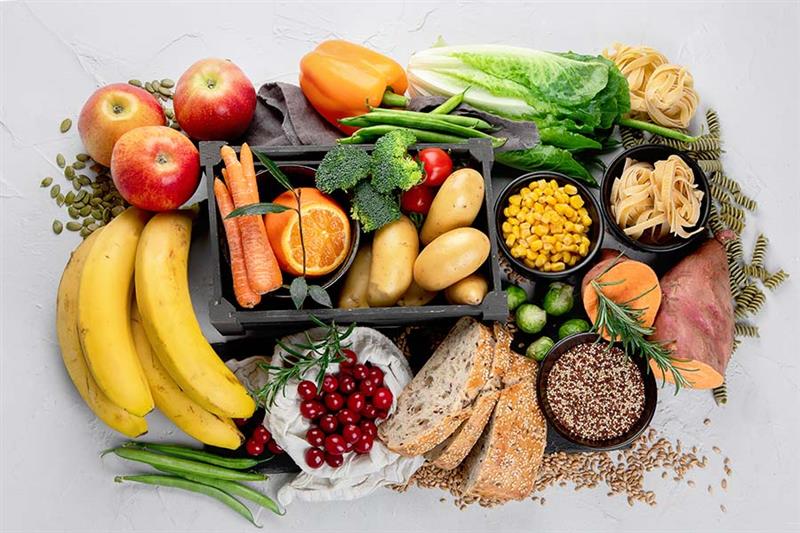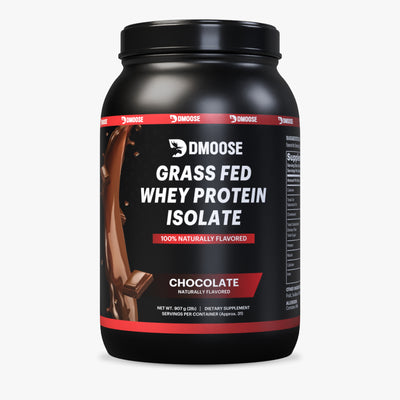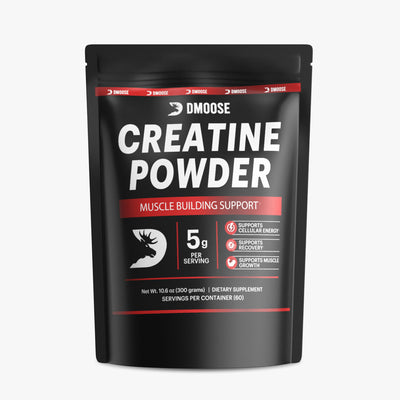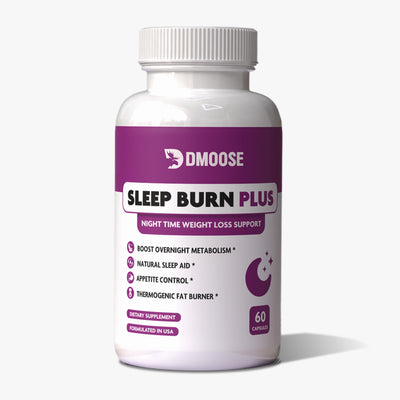Have you ever felt frustrated because your fitness goals are taking longer than you'd like? Well, you're not the only one who feels this way.
Even the fittest people in the world have days when they feel stuck, and that's where sports nutrition concepts come in handy.
Understanding and using nutrition concepts like macronutrients, body recomposition, and refeeding days can give you the edge you need to reach your goals.
The carb cycling diet is one of the trendiest diets on the internet right now. People are raving about it, but does it work? We investigated this new diet program and here’s what we found out.
What is Carb Cycling?
Carb cycling is a dieting technique that alternates between high and low carbohydrate intake days. The idea behind carb cycling is that by cycling between periods of high and low carb intake, you can minimize the adverse effects of a low carb diet while still enjoying the benefits of a high carb diet.
For example, you might eat foods like brown rice, bread, and potatoes on a high carb day. On a low carb day, you would avoid these foods and instead focus on eating protein-rich foods like eggs, meat, and cheeses.
Who Should Try Carb Cycling?
Some people find that carb cycling helps them lose weight, while others find it helpful in improving their energy levels and athletic performance. So, who should try carb cycling?
Anyone who is looking to lose weight may benefit from this strategy. By alternately restricting and replenishing carbohydrate stores, it helps boost metabolism and encourages the body to burn stored fat.
However, carb cycling may not be suitable for everyone.
Those with diabetes or other blood sugar disorders should speak to a doctor before starting a carb cycling diet, as sudden changes in carbohydrate intake can cause dangerous fluctuations in blood sugar levels.
Athletes who rely on carbohydrate storage for energy may also want to avoid carb cycling, leading to fatigue and decreased performance.
Whether or not carb cycling is suitable for you will depend on your individual goals and needs. Talk to your doctor or a registered dietitian if you're considering trying carb cycling.
Related Article: The 7 Day Diabetes Meal Plan - The Ultimate Guide to Diet & Nutrition
What Should You Eat?
Kate Patton (RD, MeD, and sports dietitian) says, “The general principle to consume healthy carbs and avoid unhealthy ones also applies to carb cycling.” Eat more complex, nutrient-dense carbohydrates to help stay active and maintain stable blood sugar levels.
Good carbs are slow to digest and high in fiber. Additionally, they are frequently unprocessed, so they still include natural nutrients.
The following are some of the healthiest and good carbohydrate options if you are following a carb cycling schedule:
- Whole grain starches (wheat, barley, rye, oats, rice)
- High fiber vegetables and fruits
- Low-fat milk, yogurt, cheese, and other low-fat dairies
- Legumes, peas, lentils, and beans
- Potatoes
Highly processed and low-fiber foods include bad carbohydrates. White wheat and sugar are frequently included in the "bad carb" foods list. You must stay away from things like white bread, sugary cereal, cakes, and cookies.
Is Carb Cycling Ketogenic?
Many people wonder if carb cycling is ketogenic; the answer is it depends. On a high carb day, you may not be in ketosis, as you would be consuming too many carbs.
Meanwhile, on a low carb day, you would probably be in ketosis. Ketosis is a metabolic condition defined by high quantities of ketone bodies in the body's tissues, which can also result from a diet that contains relatively few carbs.
So, if you are doing carb cycling to lose weight through ketosis, then you would need to make sure that your low carb days are truly low carb.
However, some find that they can lose weight even without being in ketosis, so carb cycling may still be an effective dieting strategy even if you're not in ketosis.
Related Article: Ten Weight Loss Tips To Swear By!
Benefits of Carb Cycling
It's no secret that carbs are necessary for energy, but many people don't know that you can strategically cycle your carb intake to maximize weight loss. By reducing your carb intake on certain days and eating more carbs on others, you can improve your body composition, lose weight, and feel better overall.
Improved Fat Burning
Carb cycling is a great way to lose weight and improve your body composition. You'll experience lower carbs on the days when you're trying not to eat anything, which means that those extra calories will be burned off while also increasing insulin sensitivity.
On the contrary, on a high carb diet, your body will burn more calories and keep leptin levels high (Leptin is a hormone essential for weight control and appetite) so that the low carb days don't stall metabolism.
It means it's easier for people to stay consistent when following this eating plan as opposed to those who follow aggressive protocols like intermittent fasting or excessive exercise with no break in between workouts.
Muscle Gain
For athletes and bodybuilders, protein is essential for muscle growth. But what many people don't realize is that carbohydrates are also an important part of the equation.
During the high carb days, the body is supplied with the glycogen it needs to fuel intense workouts, as it helps promote muscle growth.
Then, during the low carb days, the body is forced to break down stored glycogen for energy, which helps increase muscle endurance and prevent fatigue.
By carefully timing their carbohydrate intake, athletes can maximize their muscle growth while avoiding the negative effects of excessive carb consumption.
Weight Loss
Consider carb cycling if you're looking for an edge in your weight loss journey. This approach to eating helps burn fat while preserving muscle mass.
By cycling between high and low carbohydrate days, you can keep your metabolism guessing, which can help you lose weight more quickly. Plus, you'll avoid the dreaded weight-loss plateau by keeping your carbohydrate intake varied.
Better Blood Sugar
When you're eating a lot of carbs, your blood sugar levels spike, which is why people with diabetes have to be careful about what they eat. But what if there was a way to stabilize your blood sugar levels? It turns out that carb cycling can help with this.
Carb cycling is when you alternate between high carb and low carb days. Doing this, your body doesn't get used to one specific way of eating. It helps keep your blood sugar levels more stable.
Sports Performance
Carb cycling is a dietary approach that can improve sports performance. It involves alternating between high carbohydrate and low carbohydrate days.
High carbohydrate days help increase energy levels and athletic performance, while low carbohydrate days help burn body fat and improve endurance. Carb cycling can be tailored to meet the needs of each athlete, depending on their sport, position, and training schedule.
Related Article: Carb Cycling for Weight Loss - A Step-By-Step Guide
Drawbacks of Carb Cycling
Though the strategy has been gaining popularity in recent years as a way to lose weight, there are some potential drawbacks to this approach that should be considered before making any drastic changes to your diet.
First, it can be pretty challenging to stick to in the long term, as it requires careful planning and attention to detail to succeed. It can be incredibly challenging if you are used to eating a more relaxed, intuitive diet.
Secondly, carb cycling can also lead to increased cravings for carbohydrates as your body becomes accustomed to having them available in large amounts on certain days.
Finally, it may not be suitable for everyone, as some people may not respond well to fluctuations in blood sugar levels.
5-Day Carb Cycling Meal Plan

The following 5-day carb cycling meal plan is a simple and effective way to jumpstart your weight loss journey. This plan provides 5 days of low, moderate, and high carbohydrate meals. It includes a variety of healthy and delicious foods, so you'll never get bored with your diet.
The high carb days help replenish your glycogen stores and give you the energy you need to work out, while the low carb days help promote fat burning.
It can be easily customized to fit your individual needs. You can incorporate this meal plan into your diet by carefully adjusting the calories as the meals won’t only provide carbohydrates but other macronutrients too.
Day 1: Low Carbs, Rest Day
Low carb days will be your rest days; there will be no working out. You will consume 30-50 g of carbs which makes 120-200 calories, besides what you take from other macronutrients.
|
Breakfast |
Green muffin, feta and pepper omelet (7 g) |
|
Lunch |
Spinach and artichoke salad topped with parmesan vinaigrette (12 g) |
|
Dinner |
1 skillet chicken paprikash with some mushrooms and onions (12 g) |
|
Snacks |
Almonds, raspberries, cheddar cheese (5-8 g) |
Day 2: Moderate Carbs, Moderate Exercise
You will do a moderate workout on moderate carb days. You will consume 100 g of carbs which makes 400 calories other than the calories you take from fats and proteins.
|
Breakfast |
Apple and cinnamon overnight oats (41 g) |
|
Lunch |
Mexican spaghetti bowl (25 g) |
|
Dinner |
Salmon with curried yogurt and cucumber salad, ⅓ cup of cooked brown rice (30 g) |
|
Snacks |
Almonds, raspberries, cheddar cheese (5-8 g) |
Day 3: High Carbs, Intense Exercise
For high carb days, you will consume higher carbs so you can do intense workouts. It’s suggested to consume about 200 g of carbs on high carb days so that you get 800 calories only from carbohydrates. The rest will come from the rest of the macronutrients.
|
Breakfast |
Buttermilk and oatmeal pancakes drizzled with banana and syrup (101 g) |
|
Lunch |
Veggie and hummus sandwich (65 g) |
|
Dinner |
Pesto ravioli with spinach and tomatoes (35 g) |
|
Snacks |
Almonds, raspberries, cheddar cheese (5-8 g) |
Day 4: Moderate Carbs, Moderate Exercise
Again you will move to the moderate carbs day. Eat 100 g of carbs (400 calories) besides proteins, fats, and other nutrients.
|
Breakfast |
Apple and cinnamon overnight oats (41 g) |
|
Lunch |
Mexican spaghetti bowl (25 g) |
|
Dinner |
Salmon with curried yogurt and cucumber salad, ⅓ cup of cooked brown rice (30 g) |
|
Snacks |
Almonds, raspberries, cheddar cheese (5-8 g) |
Day 5: Low Carbs, Rest Day
The 5th day will be a low carb day where you’ll take 30-50 g of carbs from the following suggested meal, making about 120-200 calories other than the rest of the macronutrients you get from these meals.
|
Breakfast |
Green muffin, feta and pepper omelet (7 g) |
|
Lunch |
Spinach and artichoke salad topped with parmesan vinaigrette (12 g) |
|
Dinner |
1 skillet chicken paprikash with some mushrooms and onions (12 g) |
|
Snacks |
Almonds, raspberries, cheddar cheese (5-8 g) |
High Carb Days
Keep the carbs healthy during high and moderate carb days. Choose whole foods such as quinoa, whole-wheat bread, brown rice, fruit, and sweet potatoes instead of processed and sugary items.
They include a lot of fiber and have a more complicated carbohydrate structure. Your body needs to expend a little bit more energy to digest them.
Pick lean protein sources, including nuts, seeds, lentils, fish, poultry, turkey, eggs, and soy products.
Low Carb Days
Reduce fruits and starchy foods on low carb days. Low carb veggies such as leafy greens, eggplant, tomatoes, broccoli, peppers, cauliflower, and avocados are still acceptable to eat.
Besides getting enough healthy fats like olive oil, nuts, seeds, and fatty fish, you should also try to consume a lot of protein.
FAQs
1. Is carb cycling good for fat loss?
Yes, carb cycling can be a great way to help with fat loss. You can help keep your metabolism guessing by varying your carb intake, leading to more fat loss. However, it's important to note that carb cycling is not a miracle cure, and you still need to follow a healthy diet and exercise regularly if you want to see results.
2. How do beginners follow the carb cycle?
Beginners can follow the carb cycle by starting with a lower carb diet and gradually adding more carbs into their diet as they progress. It will help them to find the right amount of carbs that works best for their body.
3. What is a good carb cycling diet?
A good carb cycling diet allows you to eat various healthy foods while losing weight. It is essential to find a diet that fits your lifestyle and preferences and that you can stick to for the long term.
4. What are the best carbs?
There is no definitive answer to this question, as everyone's body will respond differently to different carb sources. However, some high-quality carb sources that may work well include whole grains, legumes, fruits, and vegetables. Experimenting with different options is essential to see what works best for you.
5. How long can you continue this diet?
It depends on your goal. You could do carb cycling for a few weeks if you want to tone up. If you want to lose weight, you could do it for a few months.
The Bottom Line
Carb cycling can be a great way to lose weight, gain muscle, and improve your performance in sports, but it’s not always easy to stick to.
If you want to try carb cycling, make sure you eat whole grain starches, high-fiber fruits and vegetables, low-fat dairy, and other healthy carbs like sweet potatoes and quinoa.
And if you have any questions about following carb cycling correctly, feel free to reach out to us. We’re happy to help!
Reading List
Article Sources
- Dirlewanger, M., et al. “Effects of Short-Term Carbohydrate or Fat Overfeeding on Energy Expenditure and Plasma Leptin Concentrations in Healthy Female Subjects.” International Journal of Obesity and Related Metabolic Disorders: Journal of the International Association for the Study of Obesity, vol. 24, no. 11, Nov. 2000, pp. 1413–18. PubMed, https://doi.org/10.1038/sj.ijo.0801395.
- Gower, Barbara A., and Amy M. Goss. “A Lower-Carbohydrate, Higher-Fat Diet Reduces Abdominal and Intermuscular Fat and Increases Insulin Sensitivity in Adults at Risk of Type 2 Diabetes.” The Journal of Nutrition, vol. 145, no. 1, Jan. 2015, pp. 177S-83S. PubMed, https://doi.org/10.3945/jn.114.195065.











